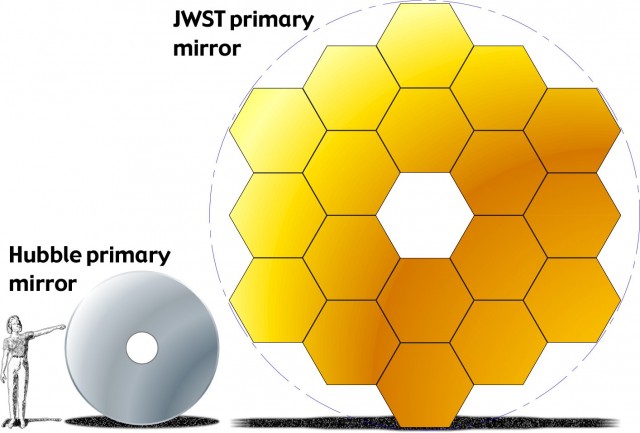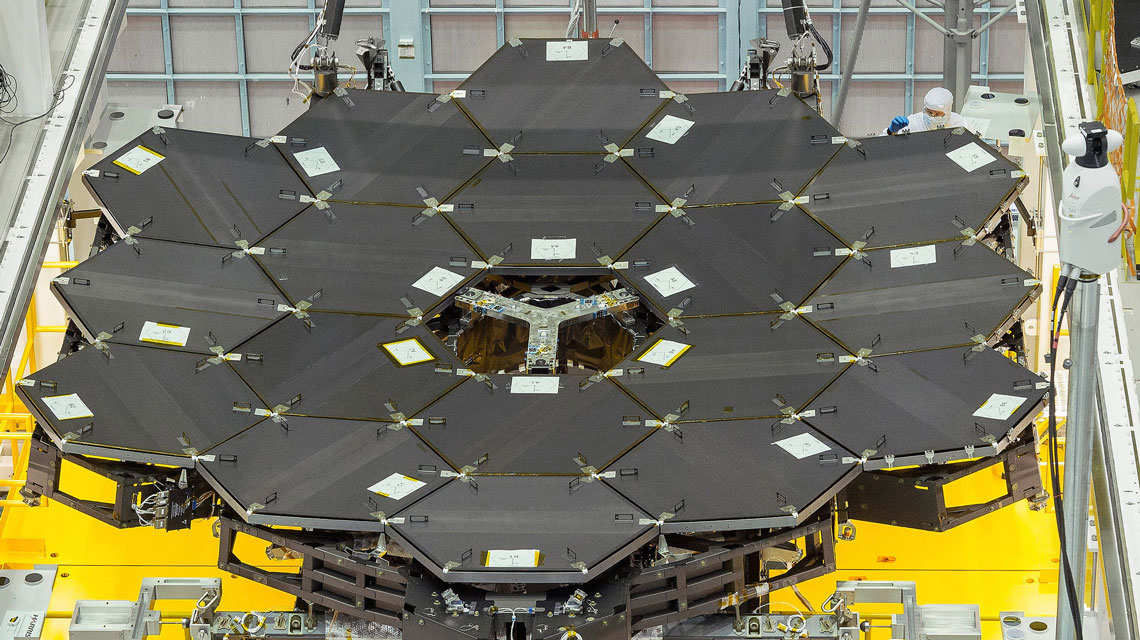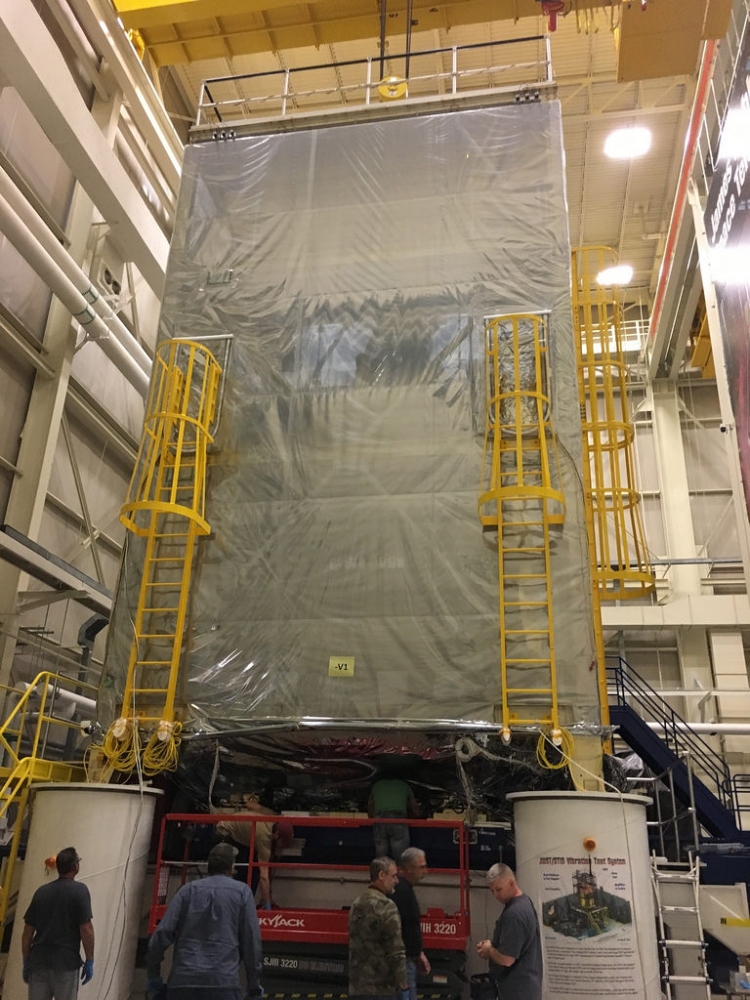"James Webb" is almost ready: NASA offers scientists to send proposals for working with a telescope

Almost immediately after launching the Hubble telescope into orbit, scientists began to prepare a more advanced device, which was planned to be equipped with a large number of functions and capabilities. Now, almost twenty years later, this project has already been implemented, and the system has passed the tests and is ready to go. This is the orbital telescope "James Webb", which is equipped with a 6.5-meter mirror. This is two times more than that of Hubble.
At the end of last year, project supervisor John Mather announced that the telescope was ready and quite capable of starting work in orbit. According to experts participating in the project, the new telescope will help begin the study of galaxies that are billions of light-years away from Earth. We are talking about the opportunity to use a kind of time machine, watching the galaxies that appeared almost immediately after the Big Bang. This will help scientists clarify the origin of the universe.
Recent problems and their solutions
The assembly of the main mirrors of the telescope was completed in February last year. Then the agency NASA announced the successful installation of the last fragment. Each of the hexagonal fragments with a mass of 40 kg has a diameter of about 1.3 m. Of the fragments, the main mirror is 6.5 meters in diameter. It is created from beryllium, which is covered with gold film.
')

Mirrors were installed not by humans, but by a robot — a specialized manipulator was developed for this purpose. On the mirror, except for the mirrors themselves, the scientists installed servo drives and spacers that correct the curvature of the surface. According to experts, in order for the focusing to be accurate, fasteners cannot move by more than 38 nanometers.
In November last year, scientists began to check the mirrors - this is an extremely important stage, which allowed to judge the performance of the device. When conducting tests, experts simulated external factors that could damage the structure. First of all, we are talking about sound and vibrations generated when the ship is launched - these factors, without due attention to them, may well disable the telescope. Generally speaking, sending James Webb into orbit is a difficult stage, during which a lot of trouble can happen if you do not carefully control all the components of the sending process.

“The verification will show whether any damage to the optical system has appeared after the test,” said Ritva Keski-Kuha, head of the telescope tests at the Goddard Space Flight Center, GSFC, at the time. ).
An interferometer, a device that allows determining the characteristics of a telescope mirror with extremely high accuracy, was used for testing. The problem is that for testing it is impossible to directly contact with the mirror, all tests must be performed remotely. Otherwise, micro scratches may appear on the mirror, which will lead to a drop in the overall performance of the system.
“That's what we are checking for — to know how things really are, instead of assuming,” said Deputy Project Leader Paul Geithner.
Interferometer solves this problem. It allows you to record the smallest changes in the location of the elements of a complex telescope mirror and the surface characteristics of individual fragments. The interferometer generates light waves of different lengths, the characteristics of which after reflection by a mirror are studied by experts.
“The previous four years can be called preparation for the current test,” said David Cheney, chief specialist for metrology of mirrors at the Goddard Space Flight Center, in November last year. “We measure the size of the main mirror, the radius of its curvature, the background noise. Our test is so sensitive that we record changes in the characteristics of the mirror, even when people talk indoors. ”
In November, the tests went smoothly, no problems were identified. But in early December, the accelerometers, which were connected to the telescope, caught some anomalies while the device was passing the vibration tests. Scientists conducted low-level vibration tests, comparing the data with those that were transmitted by the sensors before the appearance of the anomaly. After the problem was identified, the test automatically stopped to protect the hardware of the device. Scientists have once again studied the telescope, but did not find any abnormalities.

At the end of December, NASA representatives stated that no problems were found in the instruments and other components of the system. Performed both visual inspection and analysis of images of the device in ultraviolet radiation. In addition, two additional low-level vibration tests were carried out, which also revealed no problems with the James Webb telescope. More information about testing can be found in a document prepared by NASA.
In December, John Mather reported that the project participants expected the telescope to successfully pass all the necessary tests. At the same time, the agency plans to use any available precaution methods in order to ensure the successful launch of the telescope into orbit. So far, unfortunately, it is not entirely clear what these were for anomalies and how they can affect the system during its sending into space. The final conclusions will be formed by the agency at the end of this month.
In the middle of this year, “James Webb” will be sent to one of the branches of Northrop-Grumman company for the final assembly and connection with the solar screen, as well as the maneuvering system in orbit. Prior to this, the telescope's optical system and scientific instruments will be tested in the thermal vacuum chamber of the Johnson Space Center.
So far, program members have shown optimism. “We do not think that we will encounter something that will be difficult to fix,” says Paul Hertz.
Astronomers can prepare their proposals for working with a telescope
At the 229 meeting of the American astronomical community, project representatives reported that scientists could begin submitting applications regarding the proposed methods of operating the telescope. Direct operation of the telescope will begin in April 2019, six months after the planned launch of this system. Within six months, various test procedures and checks will be carried out, if everything goes as planned, then scientists will be able to realize their ideas.
“I am impressed,” says Eric Smith, program manager. The fact is that all the past years the team was engaged exclusively in the technical aspect of the matter, and not in science. And now you can go to the final stage and engage in scientific work. "This year provides an opportunity for the scientific community to return to work on the program."
At the meeting discussed above, the program's management stated that scientists who participated in the development of tools, software, or various functions of the James Webb telescope will be able to get a guaranteed time to work with the telescope. In addition, early access to the capabilities of the system will be provided to those scientists who submit interesting applications that provide the opportunity to demonstrate the full functionality of the telescope for the scientific community. As a result, other scientists will be able to understand how best to use the functionality of "James Webb" to observe the universe, and send their own suggestions. In any case, this is the idea. "Normal" offers scientists will be able to send at the end of 2017.
Now, experts who participate in the development of the system continue to conduct testing of the telescope, including the optical part and scientific instruments. Checks are made at the Goddard Space Flight Center .

Components of the telescope and its capabilities
"James Webb" is a very complex system, which consists of thousands of individual elements. They form the mirror of the telescope and its scientific instruments. As for the latter, these are such devices:
- Near infrared camera (Near-Infrared Camera);
- The device for work in the middle range of infrared radiation (Mid-Infrared Instrument);
- Spectrograph of the near infrared range (Near-Infrared Spectrograph);
- The sensor of exact targeting with the device of formation of the image in the near infrared range and the gapless spectrograph (Fine Guidance Sensor / Near InfraRed Imager and Slitless Spectrograph).
These tools will perform such scientific tasks as:
- the detection of light from the earliest stars and galaxies at the stage of their formation;
- study of stellar populations in nearby galaxies;
- the study of the young stars of the Milky Way and the Kuiper belt objects;
- determination of the morphology and color of galaxies with a strong redshift;
- determination of the light curves of distant supernovae;
- making a dark matter map using gravity lensing;
- detection of the "first light";
- exoplanet detection;
- obtaining their characteristics;
- transit spectroscopy.
What's next?
According to Eric Smith, the project remains within budget. So far, everything is going according to plan and there are no obstacles that could prevent the launch of the telescope in October 2018. The only problem found - the vibration anomalies - is already close to resolution, experts are actively working to finalize the problem and get rid of it. But, of course, difficulties may still arise. “Now we are at that stage of the program when we are faced with new challenges that are different from the problems that have arisen up to the present moment,” says Smith. But, at the same time, he is confident in the strength of the team: “When problems arise, I am sure that the team can solve them.”
Source: https://habr.com/ru/post/370049/
All Articles